#1990s new zealand cinema
Explore tagged Tumblr posts
Text







Quentin Tarantino's Pulp Fiction and Peter Jackson's Heavenly Creatures both turns 30 today. Feel old yet ?
#Pulp Fiction#Heavenly Creatures#a pretty big day for Miramax#Quentin Tarantino#1994#Peter Jackson#Melanie Lynskey#Kate Winslet#Winston Wolf#Jules Winnfield#Vincent Vega#Butch Coolidge#Marsellus Wallace#1990s#30th anniversary#Miramax#90s movies#90s cinema#The Wolf#The Preacher#The Big Man's Wife#The Hitman#The Boxer#Harvey Keitel#Samuel L. Jackson#Uma Thurman#John Travolta#Bruce Willis#RIP Marvin (and Vincent Vega too)#1990s new zealand cinema
16 notes
·
View notes
Photo



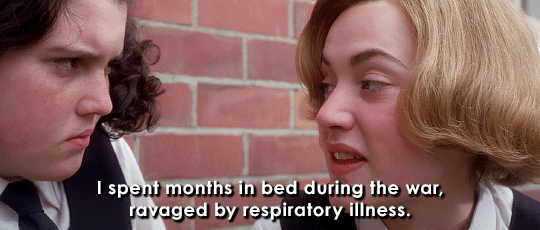

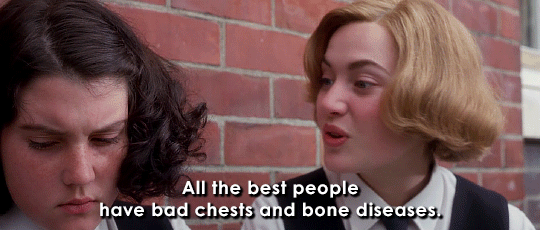

Kate Winslet & Melanie Lynskey
Heavenly Creatures (1994) dir. Peter Jackson
#heavenly creatures#kate winslet#melanie lynskey#heavenly creatures 1994#filmedit#peter jackson#juliet hulme#pauline parker#gif#film#90s#90s movies#worldcinemaedit#fyeahmovies#dailyflicks#moviegifs#filmgifs#cinemapix#1990s#90s films#new zealand cinema#parker-hulme#filmtvdaily#tvandfilm#usersource#ladiesofcinema#userfilm#ladiesblr#aotearoa
2K notes
·
View notes
Text

But I'm a Cheerleader
#but i'm a cheerleader#jamie babbit#us american film maker#north american cinema#1990s#melanie lynskey#new zealand actress#ending credits#nerd#geek#lesbian
1 note
·
View note
Text
ARTIST5: Lisa Reihana
Lisa Reihana is a multi-disciplinary artist whose practice spans film, sculpture, costume and body adornment, text and photography.
Since the 1990s she has significantly influenced the development of contemporary art and contemporary Māori art in Aotearoa New Zealand. She has earned an outstanding reputation as an artist, producer and cultural interlocutor with her attention to the complexities of contemporary photographic and cinema languages expressed in myriad ways. Her ability to harness and manipulate seductively high production values is often expressed through portraiture where she explores how identity and history are represented, and the intersection of these ideas with concepts of place and community.
Reihana represented New Zealand at the Venice Biennale in 2017 with the large scale video installation in Pursuit of Venus [infected] (2015-17). The work premiered at the Auckland Art Gallery in May 2015 and has since become a seminal work in Aotearoa New Zealand’s art history canon. in Pursuit of Venus [infected] has since been shown around the world and garnered widespread critical acclaim.




0 notes
Text
Creative Profile 1 - Lisa Reihana

Lisa Reihana (Ngāpuhi-Ngāti Hine-Ngāi Tū-Te Auru) is a multi-media artist whose work includes text, photography, sculpture, costume and body decoration, and cinema.
She has had a big impact on the growth of modern and contemporary Maori art in Aotearoa New Zealand since the 1990s.
She frequently uses portraiture to examine how identity and history are portrayed, how these notions interact with conceptions of location and community, and how to harness and control enticing high production values.


Reihana's multifaceted practise, which includes video, photography, sculpture, costume, body adornment, and written text, explores the various ways in which identity and history are produced and expressed as well as the nuanced notions of location and community.
1 note
·
View note
Text










"Morality becomes murky when your very existence is considered immoral. When you are told you are worse, it’s tempting to believe you are better. When you’re told you’re a sin, maybe it becomes easier to believe it — and to stop caring. At least within the text of the film, the murder feels less like a choice and more like an inevitability. A last resort. They refuse to be separated, they refuse to conform, and so a brick ends up in a stocking and a horror cannot be stopped. The real life Paul and Juliet were released from prison five years after their sentencing. It was a condition of their release that they never meet again. Paul became a recluse. Juliet became a successful crime novelist. And, supposedly, they never did meet again, despite living mere hours apart in Scotland, despite how much I’d love a sequel. But I wonder if they met again through others. I wonder if they discovered a world of people they could connect to and identify with. Maybe not. Maybe it doesn’t matter. But I think if we’re going to condemn these individuals we should also condemn the society that made them — if not for them then for the rest of us who barely survived."
- part of Drew Gregory's review of 'Heavenly Creatures' on Autostraddle.
#heavenly creatures#1990's#cinema#film#horror#psychological#adolescence#1950's#new zealand#Juliet Hulme#pauline Parker#society screws us up#drew gregory#autostraddle#film reviews#https://www.autostraddle.com/heavenly-creatures-is-a-queer-adolescent-nightmare/#go read the rest of this review and watch the movie!
323 notes
·
View notes
Text
Today in action thriller movie history: on August 1, 1997 Face / Off debuted in Hong Kong, the Netherlands and New Zealand.

Here's some Nicolas Cage art to mark the occasion!
#face off#hong kong#netherlands#new zealand#john woo#nicolas cage#neonoir film#neo noir thriller#neo noir film#neo noir movies#chase film#revenge thriller#action thriller#1990s movies#cult cinema#art of the day#gun fu#midnight movies#sci fi movies#sci fi art#action movie art#90s action movies#action movie#movie art#drawing#art#pop art#modern art#pop surrealism#movie history
6 notes
·
View notes
Text

CYCLE 2 ・ 10/10 ・ NEW ZEALAND
An Angel at My Table (1990, Jane Campion)
Even after 120 years of film history, and lots of advancements (as well as setbacks) in women's rights during that time, it still comes as something of a shock to see a film by a female director, with a female main character, more women than men in the cast, written by a woman and based on the autobiography of a female author. It's a good shock, of course, but it serves to illustrate how few films like this there have been - and why directors like Jane Campion are so important in film history.
As for the film itself, it's actually based on not one, but three autobiographies by the New Zealand poet and novelist Janet Frame. It was made as a three-part TV miniseries, with one episode for each book, which actually makes it feel like a pretty brisk watch. The first episode, To the Is-land, focuses on Janet's childhood. It's a lyrical and evocative portrait of growing up in WWII-era New Zealand. The second episode, which shares the title of the main film, is the most harrowing of the three parts. It covers Janet's failed attempt to become a teacher and her subsequent diagnosis with schizophrenia, which landed her in a lunatic asylum for eight years. Here, the necessary compression of time is noticeably, as it doesn't feel like eight years have passed once she's finally released, but the utter destructiveness and cruelty of the "hundreds" of electroshock treatments and inhuman treatment she received are palpable.
The third episode, The Envoy from Mirror City, finds Janet in the midst of a late blooming which occurred well into her adult life, during which she traveled around Europe and wrote some of her most acclaimed works - including a novel about her horrific experiences being treated for schizophrenia. This episode is like the calm after the storm, and is notable for Campion's exquisite rendering of how it feels to be a woman experiencing life's many pleasures and pains for the first time. To add to the list above, it's also highly unusual to see a woman who doesn't fit traditional standards of beauty in full nudity - but we see Janet naked quite a bit in this last section of the film. As with just about everything else in the movie, Campion captures it with incredible lyricism and delicacy, transforming a movie that could have been an average biopic into one that manages to convey something of the essence of its subject.
3 notes
·
View notes
Photo


Moonlight (2016) / The Piano (1993)
#moonlight#the piano#barry jenkins#jane campion#alex hibbert#anna paquin#film#parallel#moonlight 2016#the piano 1993#1990s#cinema#cinematography#film parallels#american cinema#new zealand cinema#waves#cinematic parallels#a24#a24 films#a24 movies#films#screencaps#film stills#parallels#sea#ocean#beach#victorian period#period drama
105 notes
·
View notes
Photo






Dead Alive (1992) aka "Dead Alive"
Director: Peter Jackson Timothy Balme, Diana Peñalver, Elizabeth Moody
1 note
·
View note
Photo

2 notes
·
View notes
Text
The Australian external territory of Christmas Island is infamous for its immigrant detention center. But the island also has a history of solidarity: in the 1970s, its Chinese and Malaysian workers led a union struggle against colonialism and apartheid.
Christmas Island rises from the Indian Ocean around 1,600 kilometers from Australia. Closer to Singapore than the mainland, it is home to a population of around two thousand people, the majority of whom have Chinese ancestry, with a sizable minority of people of Malay heritage. This tropical rocky speck is unlike most of Australia — on Christmas Island, Lunar New Year, Hari Raya Haji, and Hari Raya Puasa are public holidays.
Christmas Island is well known to Australians, but not for its natural beauty or unique red crab migrations. Rather, this far-flung external territory primarily features in Australia’s consciousness as a site of human misery. It plays host to an infamous immigration detention center, a cornerstone of a draconian border protection system that has driven Australian politics to the right for years.
However, few realize that Christmas Island has a more radical, internationalist history. It was the site of a militant trade-union struggle against a form of apartheid that segregated white and Asian workers until the 1980s. The victory of those who stood up to the Christmas Island Phosphate Company demonstrated the power of collective action to overcome racism and exploitation.
British Imperial Apartheid Settlement of the uninhabited island, named Christmas Island in 1643, only began after British surveyors discovered phosphate deposits in 1886. Britain annexed the island in 1888 and gave the Christmas Island Phosphate Company a ninety-nine-year lease on the territory. Phosphate mining began in 1899, using indentured labor from Singapore, the Malay Archipelago, and China.
In 1919, Britain transferred the management of mining on Christmas Island — as well as that of Nauru and Banaba, now part of Kiribati — to the British Phosphate Commissioners (BPC). The BPC comprised government representatives from Australia, New Zealand, and Britain. In 1949, the British government sold its mining rights to Australia and New Zealand. And in 1958, the UK transferred sovereignty over Christmas Island from Singapore to Australia. All the while, the BPC continued to manage the island using extraordinary powers. The BPC paid Asians a fifth of what white workers received and could summarily dismiss workers, who had no right to appeal.
The authorities deported fired workers within twenty-four hours, stamping their passports with NTR — “Never to Return.” They forbade Asian workers from owning land on Christmas Island or settling permanently. The BPC owned everything, including the local shop.
The island’s housing, transport, swimming pools, and education system were also highly segregated. White families lived in houses built to Australian standards while Asian families lived in small flats without hot water or air conditioning. Single Asian men lived in dormitories the size of bathrooms, without mattresses.
There were also two schools, one Asian and one European. The island’s European population were almost totally opposed to proposals to integrate the two schools.
Unsurprisingly, given this setup, one resident described Christmas Island as pretty much the last outpost of the British Raj. The BPC men were all there with their white shorts and long socks and they all played golf on Friday afternoons. The European people would put on shows at the Christmas Island Club, but by virtue of the fees, it was a European stronghold.
Striking Against the BPC The catalyst for change came in 1974, when workers struck to oppose the dismissal of Teo Boon How, the chief interpreter in the administrative office. The BPC had fired him on March 26, ordering him to leave Christmas Island within twenty-four hours. The next day, more than 1,100 workers refused to report to work, instead marching in protest.
The strike forced the acting administration to rescind Teo Boon How’s deportation order and later to reinstate him. This was not the first strike on Christmas Island. However, it signaled a shift. It was the first time the island’s Asian community exercised political power.
On March 21, 1975, fifteen Asian community leaders met secretly and formed the Union of Christmas Island Workers (UCIW). On Teo Boon How’s recommendation, they elected schoolteacher Michael Grimes as the UCIW’s first general secretary on a part-time basis, in part thanks to his experience organizing teachers’ unions. They also elected as president Lim Sai Meng, a worker with a Chinese background who had come to Christmas Island from Malaysia in 1973. Within a week of its formation, more than seven hundred workers had joined the new union.
Grimes had arrived in 1975, alongside some twenty other people from the Commonwealth Teaching Service. Their salaries outstripped those of local teachers, highlighting the extent to which the BPC underpaid Asian workers.
In 1978, Grimes resigned as UCIW secretary and was replaced by Gordon Bennett, an English migrant. Bennett’s more militant style of union organizing caught the attention of mainland Australian newspapers, highlighting the plight of Christmas Islanders.
The Chinese community nicknamed Bennett “Tai Ko Seng” (Big Brother Who Delivers). Under his leadership, the UCIW immediately called for a $30-a-week raise and minimum wage parity with the mainland within a year. The workers also demanded Australian citizenship rights for Christmas Islanders and called for the Australian government to take full administrative control of the island.
In 1979, the workers met at a cinema in Poon Saan, Christmas Island’s second-largest town. Almost the entire workforce of the island voted to take strike action in support of the UCIW’s demands, bringing phosphate production to a halt. The workers self-levied to raise a war chest of $70,000 for their campaign.
The BPC fought back against the industrial action. They stood down three hundred workers in May, following a strike by ship loaders. According to their industrial agreement, the BPC didn’t have the power to sack these workers. James Taylor, the deputy president of Australia’s arbitration commission, came to the island to mediate the dispute.
At the company’s request, Taylor inserted a stand-down clause into the ship loaders’ agreement, retrospectively legitimizing the BPC’s move. Unsurprisingly, this only fanned the flames of the strike.
The workers reacted swiftly. A mass meeting of 1,500 workers voted to prevent Taylor from leaving Christmas Island. Taylor was only allowed to leave some days later, after Australian Council of Trade Unions president Bob Hawke flew to Christmas Island and intervened on his behalf.
Next, the UCIW took its campaign to the mainland, where they made use of a series of creative tactics. They took the home affairs minister to court for underpayment and established a protest tent camp outside Parliament House in July 1979. Later that year, they waged a twelve-day hunger strike, garnering media attention.
Against all odds, the union won the pay raise it had demanded immediately. And its protest actions resulted in a public inquiry into the BPC. The inquiry recommended that Christmas Island be brought under the same administrative jurisdiction and industrial legislation as mainland Australia. A former BHP executive, Wilfred Sweetland, ran the inquiry and was scathing of the BPC, describing it as “colonial” and “repugnant.”
By 1981, the UCIW had won all its industrial demands including wage parity. The publicly owned Phosphate Mining Company of Christmas Island took over the phosphate industry. This finally put an end to the BPC’s rule. Following his victory in the 1984 election, Bob Hawke’s Labor government brought Christmas Island fully under Australian administration.
Ongoing Injustices Despite these victories, Christmas Islanders are still confronted by injustices. In 1987, the Australian government closed the phosphate mine. Although union workers purchased the mine and reopened it in 1990, other attempts at economic diversification have not borne fruit.
The Australian government blocked proposals to boost tourism by revitalizing the island’s resort and casino, previously legislating to prohibit casino operations. This means that Serco, the company that runs the notorious Christmas Island Detention Centre, is the island’s largest employer.
The battle against the legacy of colonialism is also not over. Christmas Island has many of the characteristics of a non-self-governing territory, as described by UN Charter Article 73. Yet Australian governments still treat it like a distant possession. Islanders do not enjoy basic democratic rights.
Australian citizens in Christmas Island can vote in federal elections, but they must do so as part of the Northern Territory, and have no say over the Western Australian state laws that apply to them. Just as Christmas Islanders did not get to vote over the transfer of sovereignty to Australia in 1958, the Australian government has not consulted with them or allowed them a say over the island’s governance since.
Following its historic victories in the early 1980s, the UCIW has maintained its key role in the life of the island. Gordon Thomson, a UCIW leader who also serves as the president of the Christmas Island Shire Council, summed it up well: the collective power of unionism yet remains the most important and only real means of resisting those who would destroy us and the gains we have made as a union since 1975. Indeed, the story of the UCIW’s victorious battle against the colonial apartheid regime in Christmas Island should be as well known in Australia as other historic struggles, like the Wave Hill walk-off or the green bans. Christmas Island’s history shows that militant, class-struggle trade unionism is a powerful weapon against colonialism and racism.
#malaysian diaspora#singaporean diaspora#christmas island#australia#labour and unions#1970s#union of christmas island workers
2 notes
·
View notes
Photo

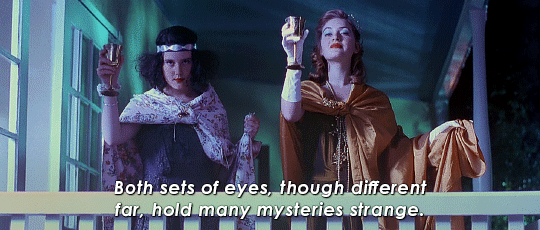
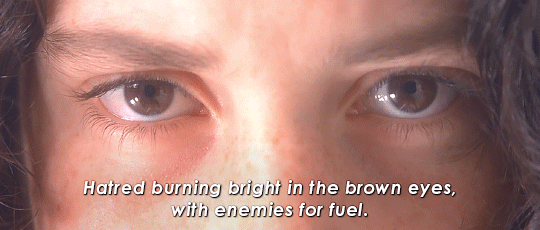


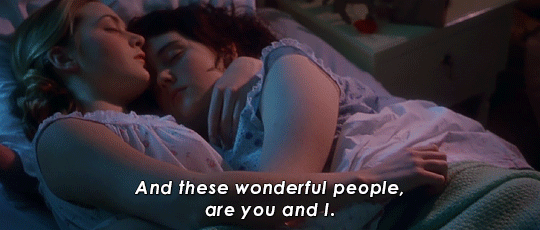
Kate Winslet & Melanie Lynskey
Heavenly Creatures (1994) dir. Peter Jackson
#heavenly creatures#kate winslet#melanie lynskey#peter jackson#filmedit#heavenly creatures 1994#gif#juliet hulme#pauline parker#film#1990s#90s movies#90s#90s films#moviegifs#filmgifs#dailyflicks#worldcinemaedit#cinemapix#fyeahmovies#new zealand cinema#parker-hulme#''the ones that i worship'' (poem by pauline parker 1953)#aotearoa
1K notes
·
View notes
Photo
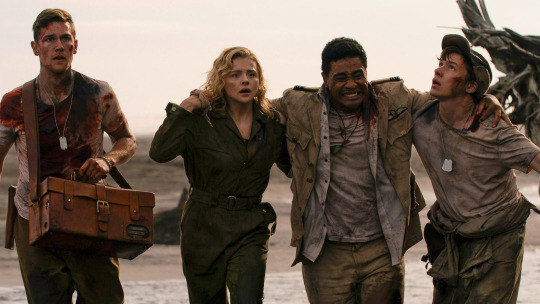
The Package.
As the bonkers genre thrill-ride Shadow in the Cloud blasts into the new year, writer and director Roseanne Liang unpacks her love of Terminator 2, watching Chloë Grace Moretz’s face for hours, and the life lesson she learned from Crouching Tiger, Hidden Dragon’s Cheng Pei-Pei.
Roseanne Liang’s TIFF Midnight Madness winner Shadow in the Cloud landed with a blast of fresh genre energy on VOD platforms on New Year’s Day. It’s A-class action in a B-grade body, cramming plenty into its taut 83 minutes, including: a top-secret package, a freakish gremlin, a hostile bunch of Air Force dudes, outrageous stunts, dogfights and a fake wartime PSA that feels remarkably real.
Throughout, the camera is focused mostly on one face—Chloë Grace Moretz’s, playing British flight officer Maude Garrett—as she tackles all of the above from a claustrophobic ball turret hanging under a B-17 Flying Fortress, on a classified mission over the Pacific Ocean during World War II.
While the film’s tonal swings are confusing to some, schlock enthusiasts and genre lovers on Letterboxd have embraced the film’s intentionally outlandish sensibility, which “makes excellent use of its genre mash to create an unpredictable, guilty pleasure,” says Mirza. Fajar writes that “it felt like the people involved in this project knew how ridiculous it is and gave a hundred and ten percent to make it work. Someday, it will become a cult classic.” Mawbey agrees: “It really goes off the rails in all the best ways during the final third, and the last couple of shots are just perfect.”

Chloë Grace Moretz and her top-secret package in ‘Shadow in the Cloud’.
To most of the world, Liang is a so-called “emerging” director, when in fact, the mother-of-two, born in New Zealand to Chinese parents, has been at this game for the past two decades. She has helmed a documentary and a romantic drama, both based on her own marriage; a 2008 short called Take 3, which preceded Hollywood’s current conversation about representation and harassment; and Do No Harm, the splatter-tastic 2017 short in which her technical chops and fluid feel for action were on full display, and, as recorded in multiple Letterboxd reviews, established her as one to watch.
Do No Harm scored Liang valuable Hollywood representation, whereupon producer Brian Kavanaugh-Jones brought Shadow in the Cloud to her, thinking she might connect with the material. “It did connect with me on a level that is very personal,” Liang tells me. “As a woman of color, as a mother who juggles a lot.” She says Kavanaugh-Jones then went through the process of removing original writer Max Landis from the project. “He felt that Max was not a good fit for this project, or for how we like to run things. We like to be respectful and courteous and kind to each other…”
In several interviews, Liang has said she’s comfortable with film lovers choosing not to watch Shadow in the Cloud based on Landis’s early involvement. What she’s not comfortable with is her own contribution—and that of her cast and crew—being erased. While WGA rules have his name attached firmly to the project, the credit belies the reality: his thin script, reportedly stretched out to 70 pages by using a larger-than-usual font, was expanded and deepened by Liang and her collaborators.
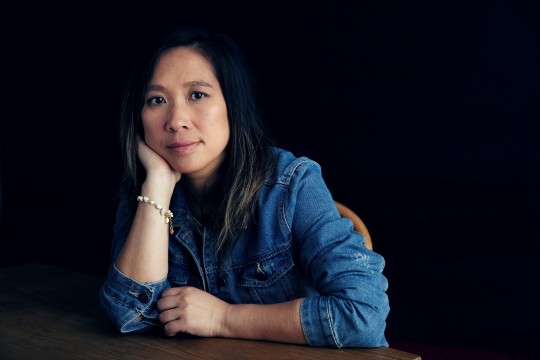
Writer-director Roseanne Liang. / Photo by Dean O’Gorman
That team includes editor Tom Eagles, Oscar nominated for Jojo Rabbit, actor Nick Robinson (the titular Simon in Love, Simon) and Beulah Koale, a star of the Hawaii Five-Oh series. The opening newsreel was created by award-winning New Zealand animation studio Mukpuddy, after a small test audience got weirded out by the sight of a gremlin in a war film, despite well-documented WWI and WWII gremlin mythology. It’s an unnecessary but happy addition. The cartoon style was inspired by Private Snafu, a series of WWII educational cartoons scripted by none other than Dr. Seuss and directed by Looney Tunes legend Chuck Jones.
But the film ultimately hangs on Chloë Grace Moretz, who overcame cabin fever to drive home an adrenaline rush of screen craft, in which the very limits of what’s humanly possible in mid-air are tested (in ways, it must be said, that wouldn’t be questioned if it were Tom Cruise in the role). Liang would often send directions to Moretz’s ball turret via text, while her cast members delivered live dialogue from an off-set shipping container rigged with microphones. “I just never got sick of Chloë’s face and I’ve watched her hundreds, if not thousands of times. You feel her, you are her, she just engages you in a way that a huge fighting scene might not, if it’s not designed well. Giant empty spectacle is less interesting than one person in one spot, sometimes.”
Ambitious and nerdy about film in equal measure, it’s clear there’s much more to come from Liang, and I’m interested in what her most valuable lesson has been so far. Turns out, it’s a great story involving Chinese veteran Cheng Pei-Pei (Come Drink With Me’s Golden Swallow, and Crouching Tiger, Hidden Dragon’s Jade Fox), whose film training includes a tradition of remaining on set throughout filming.
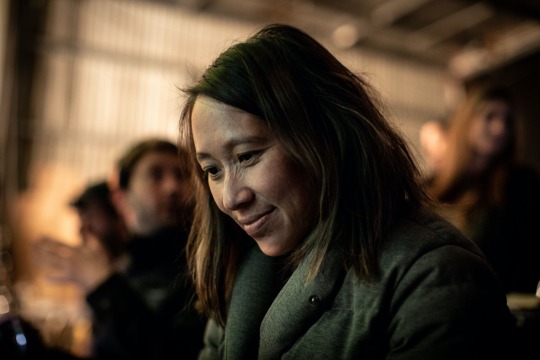
Roseanne Liang on the set of ‘Shadow in the Cloud’.
That meant that, during filming of Liang’s My Wedding and Other Secrets, Cheng would stay on set when she wasn’t required. “In New Zealand, trailers are a luxury,” Liang explains. “I said ‘Don’t you want to go to the trailer that we arranged for you?’ ‘No, I just want to sit and watch.’ ‘Why do you want to watch it, you’ve seen it hundreds of times!’ And she said ‘I learn something new every time’. To Pei-Pei, the secret of life is constant education and curiosity and learning. Movies are her work and her craft and her life, and she never gets bored. If I can be like her, that’s the life, right?”
Speaking of which, it’s time we put Liang through our Life in Film interrogation.
What’s the film that made you want to become a filmmaker? Terminator 2: Judgment Day is the movie that is at the top of the mountain that I’m climbing. To me it’s the perfect blend of spectacle, action design, smarts and heart. It poses the theory that if a robot can learn the value of humanity then maybe there’s hope for the ships that are us. That’s perennial, and possibly even more pertinent today. It holds a very special place in my heart, along with Aliens, Mad Max: Fury Road, Die Hard, La Femme Nikita and Léon: The Professional.
What’s your earliest memory of watching a film? I have a cassette tape that my dad made for my grandma in 1981 (he’d send tapes back to his mother in Hong Kong). I was three years old and he had just taken us to see The Empire Strikes Back in the cinema. And he can’t talk to my grandma because I’m just going on and on about R2-D2. I will not shut up about R2-D2 and he’s like, “Yes, yes I’m trying to talk to your grandmother,” and I’m like, “But Dad! Dad! R2-D2!” So it’s actually an archive, but it’s become my memory.
What’s the most romantic film you’ve ever seen? Eternal Sunshine of the Spotless Mind. It’s not the sexiest, but it’s the most romantic. That last scene, those last words where she goes “But you’re gonna be like this forever and I’m gonna be like this forever…” and he just goes “okay”. That to me is one of the most romantic scenes I’ve ever seen. It is a perfect movie.
And the scariest? If it’s a horror movie, the most scared I’ve been is The Ring. I was watching it on a VHS and I was lying on a beanbag on the floor and I was paralyzed with fear. I couldn’t move, because I felt that if I moved she’d see me! Also, American Psycho just came to me this year. I caught the twentieth anniversary of that movie, which is a terrifying film, and again, possibly more relevant now than when it was made. The scariest film that’s not a horror is Joker. It scared me how much I liked it. When I came out of the movie, I was like, “I’m scared because I kind of love it, but it’s horrible. It’s so irresponsible. I don’t wanna like this movie but goddamn, I feel it.” Like, I wanted to go on the streets and rage. In a way we’re all the Joker, we’re all the Batman. That duality, that yin and yang, is inside everyone of us. It’s universal.
What is the film that slays you every time, leaving you in a heap of tears? This is a classic one, the opening sequence of Up. The first ten minutes of Up just destroy me every time. I also saw Soul a couple of days ago and I was with the whole family and I, just, if I wasn’t with the whole family I would have been ugly-sobbing. I had a real ache in my throat after the movie because I was trying to stop [myself] from sobbing.
Tell me your favorite coming-of-age film, the film that first gave you ‘teenage feelings’? Pump Up the Volume. Christian Slater! Off the back of Pump Up the Volume, I fancied myself as a prophet and wrote a theater piece called Lemmings. Obviously the main character was a person who could see through the façade, and everyone else was following norms. “No one understands me, I’m a prophet!” So clearly I have this shitty, Joker-style megalomaniac inside of me. It was the worst play, and I don’t know why my teachers agreed for us to do a staging of it!
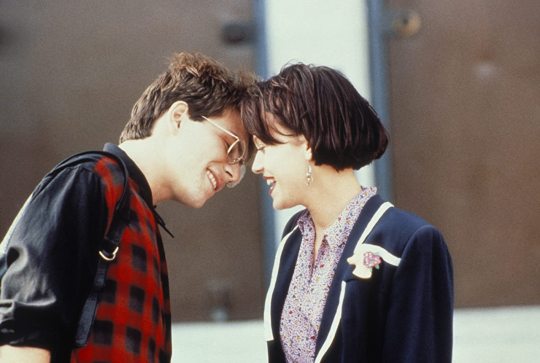
Christian Slater and Samantha Mathis in ‘Pump Up the Volume’ (1990).
Is there a film that you and your family love to rewatch? We’ve tried to impose our taste on our children, but they’re too young. We showed them The Princess Bride—they didn’t get it. We literally showed our babies Star Wars in their cribs. That’s how obsessive Star Wars fans we were.
Name a director and/or writer that you deeply admire for their use of the artform. I have a slightly weird answer for this. Can I just give love to Every Frame a Painting by Tony Zhou and Taylor Ramos? They are my film school. I was thinking of my love of Edgar Wright, but then I thought of their video essay on Edgar Wright and how to film comedy, and his essay on Jackie Chan and the rhythm of action and then their essay on the Coen Brothers and Shot Reverse Shot. I must have watched that 30 times ahead of the TV show that I’m making now. I started out in editorial and Tony Zhou is an editor and he talks about when to make the cut: it’s an instinct, it’s a feeling, it’s a rhythm. I realized the one thing in common that I could mention about all the films I’ve loved is Every Frame a Painting. It’s their love of movies that comes bubbling out of every single essay that they made that I just wanna shout out at this part of my career.
Were there any crucial films that you turned to in your development for Shadow in the Cloud? Indiana Jones was something that Chloë brought up—she likes the spiffiness and the humor of Indiana Jones. Sarah Connor was our touchstone for the female character. For one-person-in-one-space type stories, I watched Locke quite a lot, to figure out how they shaped tension and story and [kept] us on the edge of our seats when it’s only one person in one space. In terms of superheroes, I came back to Aliens. Not Alien. Aliens. You know, there are two types of people in this world—people who prefer Alien over Aliens, and people who prefer Aliens over Alien. But actually I think I vacillate for different reasons.
Can there be a third type of person, who thinks they’re both great, but Alien³, just, no? Maybe that’s the best group to be in. We don’t need to fight about this, we can love both of them! I was having an argument with James Wan’s company about this, because there’s a rift inside the company of people who prefer Alien over Aliens.
Okay, program a triple feature with your film as one of the three. I don’t know. Ask Ant Timpson!
I’ll ask Ant Timpson. [We did, and he replied: “Well, one has to be the Twilight Zone episode with William Shatner: Nightmare at 20,000 Feet. And then either Life (2017) or Altitude (2010).”]
Thank you Ant! I used to go to his all-nighters as a university student. He is the king of programming things.
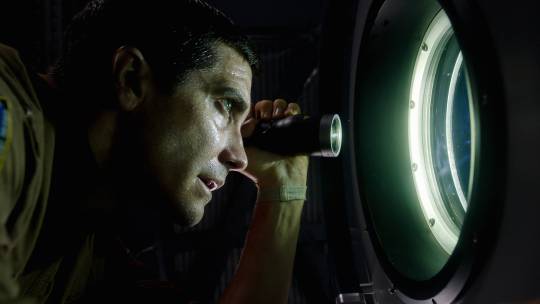
Jake Gyllenhaal in ‘Life’ (2017).
It’s strange that we never met at one of his events! Ant would make me dress up in strange outfits and do weird skits between films. (For those who don’t know, Timpson ran the Incredibly Strange Film Festival for many years—now part of the New Zealand International Film Festival—and still runs an annual 24-Hour Movie Marathon.) So what’s a film from those events that sticks in your head as the perfect genre experience with a crowd? It was a movie about a man protecting a woman who was the girlfriend of a mafia boss: A Bittersweet Life. Not only does it have one of the sexiest Korean actors, sorry, not to objectify, but also I actually screenshot a lot of that film for pitch documents. And, do you remember a crazy Japanese movie where someone’s sitting on the floor with a clear umbrella and a woman is lactating milk? Visitor Q by Takashi Miike. I remember just how fucking crazy that was.
Finally, what was the best film you saw in 2020? I haven’t seen Nomadland yet, so keep in mind that I haven’t seen all the films this year. I have three: The Invisible Man, which I thought was just amazing. I thought [writer-director] Leigh Whannell did such a great job. The Half of It by Alice Wu, a quiet movie that I simply just adored. And then the last movie I saw at the cinema was Promising Young Woman. The hype is real.
Related content
Kairit’s list of “She Did THAT!!!” films
Beyond Badass: Female Action Heroes
Up in the Air: The Letterboxd Showdown of Best Airplanes in film
Follow Gemma on Letterboxd
‘Shadow in the Cloud’ is available in select theaters and on video on demand now.
#life in film#letterboxd life in film#female director#directed by women#52 films by women#action film#action genre#chloe grace moretz#wwii film#ww2 film#terminator 2#chinese new zealander#cheng pei-pei#tom eagles#jojo rabbit#female action hero#letterboxd
4 notes
·
View notes
Text
The 15 Most-Watched YouTube Videos of All Time
The 15 Most-Watched YouTube Videos of All Time

1. Luis Fonsi – Despacito ft. Daddy Yankee
https://l.arby24.com/jpKo4
Luis Fonsi’s reggaeton hit Despacito was another global megahit. The song went to number one in 47 countries and made the top 10 in a further six. It became the first Spanish-language record to go to number one in the U.S. since Macarena back in 1996.
The song also set a record for the fastest song to reach one billion views, taking just 97 days. In comparison, it took Gangnam Style five months to achieve the same landmark.
2. Wiz Khalifa – See You Again ft. Charlie Puth
https://l.arby24.com/P2S6V
See You Again was written for the movie Furious 7 and is intended to stand as a tribute song for the franchise’s deceased former star, Paul Walker.
The movie was in the middle of filming when Walker died in a car accident in 2013. Walker’s brothers, Caleb and Cody, were used as stand-ins to complete the remaining scenes.
3. Ed Sheeran – Shape of You
https://l.arby24.com/HCnFp
Ah, back to music. Ed Sheeran joins Katy Perry as the second artist with two videos in the list. The Shape of You is a pop song that draws heaving on Jamaican dancehall music. It was number one in 34 countries.
The video features American dancer Jennie Pegouskie and retired sumo wrestler Yamamotoyama Ryuta.
4. Masha and The Bear – Recipe for Disaster (Ep. 17)
https://l.arby24.com/TpiFn
Um, what? You weren’t expecting that, were you? We definitely weren’t.
Masha and The Bear – Recipe for Disaster (Episode 17) is the most viewed non-music video on YouTube and is fourth in the all-time list.
The animated kids’ show—which is in Russian—tells the story of Masha and her pet bear as they try to stay out of trouble. In this episode, Masha cooks too much porridge and puts her forest homeland in danger.
5. Psy – Gangnam Style
https://l.arby24.com/cZp6R
You knew it was coming, didn’t you? Along with the song in the top slot (no peeking), it’s one of just two videos in the top 15 that’s been a bona fide global phenomenon.
It was number one in 30 counties, world leaders and sports stars performed the dance moves, and United Nations Secretary-General, Ban Ki-moon, said it was a “force for world peace.” Psy even met with Ki-moon at the UN headquarters in New York.
It’s safe to say that Psy’s follow-up—Gentleman—wasn’t quite so popular.
6. Mark Ronson – Uptown Funk ft. Bruno Mars
https://l.arby24.com/AamU8
Drawing heavily on the sounds of 1980s funk music, Uptown Funk was the number one song in the U.S. for 14 consecutive weeks. In the end-of-year awards shows, it picked up two Grammys and a Brit.
7. Justin Bieber – Sorry
https://l.arby24.com/hEx74
Bieber’s only song in the top 15 isn’t the once-popular Baby. Instead, it’s his 2015 hit, Sorry.
Fair warning, the song is catchy, but the video is tragically bad (unless you like repetitive dance moves and have a fashion sense from the mid-1990s).
8. Maroon Five – Sugar
https://l.arby24.com/tp0Wq
The video for Maroon Five’s Sugar is the most innovative on this list. The band partnered with Wedding Crashers director David Dobkin and traveled around Los Angeles to surprise couples at their weddings.
The video is entirely genuine. For each wedding featured, only one attendee knew about the surprise band, and they were not told the band’s identity.
9. Taylor Swift – Shake it Off
https://l.arby24.com/2hFCs
“Haters gonna hate, hate, hate, hate, hate.”
That single lyric immortalized Shake it Off, turning it into a worldwide hit, producing an endless sea of memes, and even getting a shoutout on The Big Bang Theory from Sheldon Cooper
10. Katy Perry – Roar
https://l.arby24.com/RLomz
Katy Perry is one of just two artists with two videos in the top 15. Her second entry, Roar, is a middle-of-the-road pop song that went to number one in several countries.
Upon release, many fans accused the song of copying Sara Bareilles’ track Brave. Bareilles herself played down the furor.
11. Enrique Iglesias – Bailando
https://l.arby24.com/qPhyV
The first reggaeton song on the list is Bailando by Enrique Iglesias. Although Iglesias also released the song in English and Portuguese, it is the Spanish-language version that has garnered the most attention.
Indeed, it was the first Spanish-language video on YouTube to collect more than one billion views
12. Ed Sheeran – Thinking Out Loud
https://l.arby24.com/hV9BX
Ed Sheeran is one of the most-followed artists on Spotify; his success has clearly translated over to YouTube.
13. Katy Perry – Dark Horse
https://l.arby24.com/KfWAe
Edging out Adele by less than two million views is Katy Perry’s Dark Horse. It should be noted, however, that Perry’s song has been on YouTube for almost 12 months more than Adele’s song. We can probably expect it to drop down the rankings in the near future.
14. Adele – Hello
https://l.arby24.com/S5YZq
Adele’s 2015 hit Hello was the lead single from her third studio album, 25. It became the first song in the United States to sell more than one million digital copies in a week.
Thanks to a collaboration with IMAX cinemas, the song’s video was the first one in the world to use the IMAX format. Hello also holds the record for the fastest video to reach 100 million views on Vevo.
15. Major Lazer & DJ Snake – Lean On
https://l.arby24.com/QbsGt
Lean On is an electronic dance music track that went to number one in Australia, Ireland, the Netherlands, Mexico, New Zealand, Finland, Denmark, and Switzerland. It made the top five in both the U.S. and the U.K.
Most of the video was recorded in Maharashtra, India, though some shots were filmed in Stockholm.
The first video to garner one million views was a Nike advert featuring Ronaldinho in 2005. Less than 10 years later, the first video with one billion views was Psy’s 2012 hit, Gangnam Style; it surpassed Justin Bieber’s song Baby to become the web’s most watched video ever.
But does Gangnam Style still hold the record? Here’s a countdown of the 15 most-watched YouTube videos of all time…
https://arby24.com/
https://l.arby24.com
https://dir.arby24.com
1 note
·
View note
Photo

Brochure Design
Contents of brochure
Mōu tēnei wāhi, mō tātou katoa, Ko te manaakitanga te kaupapa!
This space is for you, and for us all To uplift each other’s mana is the purpose!
This summer, we’re making a space for you, your friends, whānau and communities at the Aotearoa New Zealand Festival of the Arts. Space to experience an emotional journey, to discover more about yourself and others, and to come together through the arts.
Running every two years since 1986, Aotearoa New Zealand Festival of the Arts is the nation’s largest celebration of cutting-edge arts experiences based in the Wellington region. Our 24 day programme features free and family events including music, theatre, dance, visual arts, literature and more.
From the spectacular to small and perfectly formed performances - the Festival has selected artists defined by their incredible skill, boundless imagination and artistic bravery.
In the Festival you can voyage to the future; connect to histories, land and spiritual realms through ritual, stories and classical forms; and meet characters and writers from around the globe - all from the capital Te Whanganui-a-Tara Wellington.
To stay up to date, sign up for our regular enewsletters, follow us on Facebook, see our journey on Instagram or join the conversation on Twitter.
Get Good Emails Get the latest Festival updates by email

Lisa Reihana (Ngāpuhi - Ngāti Hine, Ngāi Tū-Te Auru) is a visual artist whose practice includes film, sculpture, costume and body adornment and photography. She works master beauty and meaning, examining how identity and history are represented, and exploring concepts of place and community.
As well as holding a space in the world of contemporary art, Lisa is frequently involved in public and community arts. Her work often moves in the realms of fashion as a core member of the indigenous collective Pacific Sisters, and in through collaboration with international artists, such as luxury shoemaker Christian Louboutin. Since the 1990s she has significantly influenced the development of New Zealand contemporary art and contemporary Māori art. She was named an Arts Laureate by the Arts Foundation in 2014 and awarded the Te Tohu Toi Kē Te Waka Toi Maori Arts Innovation Award in 2015.
Lisa is the 2022 Artist in Focus and is bringing a free series of her most celebrated pieces alongside new works to the Wellington region over the festival period. Embrace this opportunity to delve deep into the world of one of Aotearoa’s artistic treasures.

Called the world’s “coolest little city” by VOGUE, Wellington is known for its vibrant arts scene, world-class café and restaurant culture, and active outdoor lifestyle.
You'll be hard pressed to find a city in the world that's easier to get around, which makes it ideal for getting between Festival events. Wellington enjoys more cafés, bars and restaurants per capita than New York City, so you can fuel your Festival experience with the tastiest local food, craft beers and wine. Come January, Festival deals from many of them can be found here.
A creative, cosmopolitan city, Wellington combines the sophistication of a capital with the warmth and personality of a village. It’s also loved by our visiting artists – who you’ll likely bump into on Cuba Street or wandering along our beautiful waterfront.

Wellington Waterfront
1 Taranaki St, Te Aro, Wellington 6011, New Zealand
The Roxy Cinema
5 Park Rd, Miramar, Wellington 6022, New Zealand
Toi Art Gallery, Te Papa
55 Cable St, Te Aro, Wellington 6011, New Zealand
{Suite}
241 Cuba St, Te Aro, Wellington 6011, New Zealand
Page Gallery
42 Victoria St, Wellington, 6011, New Zealand
Jhana Millers Gallery
level 1/85 Victoria St, Te Aro, Wellington 6011, New Zealand
City Gallery Auditorium
Te Ngākau Civic Square, Wellington 6011
Pātaka Art + Museum
17 Parumoana Street, Porirua 5022, New Zealand
The Dowse Art Museum, Lower Hutt
45 Laings Rd, Lower Hutt 5010, New Zealand
Māoriland Film Hub
68 Main Street, 11 Raukawa Street, Ōtaki 5512
Adam Art Gallery
Gate 3, Victoria University, Kirk Building Kelburn Parade, Kelburn, Wellington 6012, New Zealand
Te Rauparaha Arena
17 Parumoana St, Porirua 5022, New Zealand
Bartley + Company Art
56a Ghuznee St, Te Aro, Wellington 6011, New Zealand
McLeavey Gallery
147 Cuba St, Te Aro, Wellington 6011, New Zealand
Opera House
111 Manners St, Te Aro, Wellington 6011, New Zealand
Bowen Galleries
39 Ghuznee St, Te Aro, Wellington 6011, New Zealand
TSB Arena
4 Queens Wharf, Wellington, 6011, New Zealand
Circa Theatre
1 Taranaki St, Te Aro, Wellington 6011, New Zealand
Whirinaki Whare Taonga, Upper Hutt
836 Fergusson Dr, Upper Hutt 5018, New Zealand
St Mary of the Angels
17 Boulcott St, Wellington, 6011, New Zealand
Te Papa
55 Cable St, Te Aro, Wellington 6011, New Zealand
Renouf Foyer, Michael Fowler Centre
111 Wakefield Street, Wellington 6011, New Zealand
St Andrew's on The Terrace
30 The Terrace, Wellington 6011, New Zealand
New Zealand Portrait Gallery, Te Pūkennga Whakaata
60 Lady Elizabeth Lane, Pipitea, Wellington 6011, New Zealand
Michael Fowler Centre
111 Wakefield Street, Te Aro, Wellington
City Gallery
Te Ngākau Civic Square, Wellington 6011
Hannah Playhouse
12 Cambridge Terrace, Te Aro, Wellington 6011, New Zealand
Lower Hutt Little Theatre
2 Queens Drive, Hutt Central, Lower Hutt 5010
Online
Wherever you are
The Engine Room
18 Wallace Street, Mount Cook, Wellington 6021, New Zealand
Katherine Mansfield House & Garden
25 Tinakori Road, Thorndon, Wellington 6011, New Zealand
Page Galleries
42 Victoria Street, Wellington Central, Wellington 6011, New Zealand
Toi Māori Gallery
29 Tory Street, Te Aro, Wellington 6011, New Zealand

FLYING
Wellington Airport is a state-of-the-art airport close to the city (they are also great community supporters). We use and recommend Air New Zealand for flights in and out of the capital.
WALKING
Most of our venues are within easy walking distance of each other and the major hotels in central Wellington. You'll find all the directions and a handy Festival map on our individual Venues pages.
PUBLIC TRANSPORT
Visit metlink.org.nz for the most up-to-date public transport information about Wellington trains and buses, including accessibility options.
TAXI
We use and recommend Wellington Combined Taxis. They can provide wheelchair-friendly options if required.
PARKING
There are a number of public parking facilities in the central city. Wellington City Council also operate car parks within walking distance of Festival venues.
Information about access to mobility parking can be found on our Venues page.

CONTACTS
Questions or enquiries? Feel free to get in touch, we're here to help.
Phone: +64 4 473 0149 Fax: +64 4 471 1164 Email: [email protected]
Office hours: 8.30am–5.30pm, Mon–Fri
OFFICE ADDRESS
Level 1 264 Cuba Street Wellington 6011 New Zealand
POSTAL ADDRESS
PO Box 10113 Waterloo Quay Wellington 6011 New Zealand
0 notes